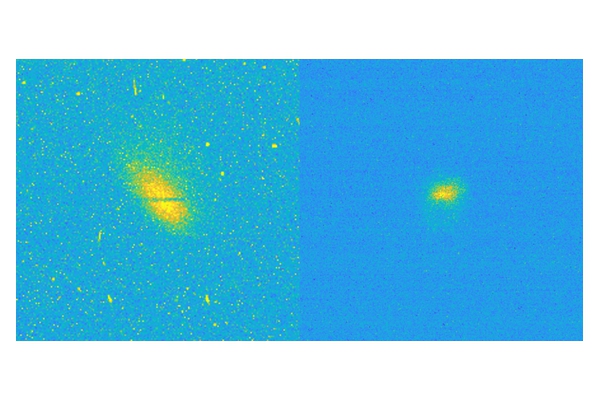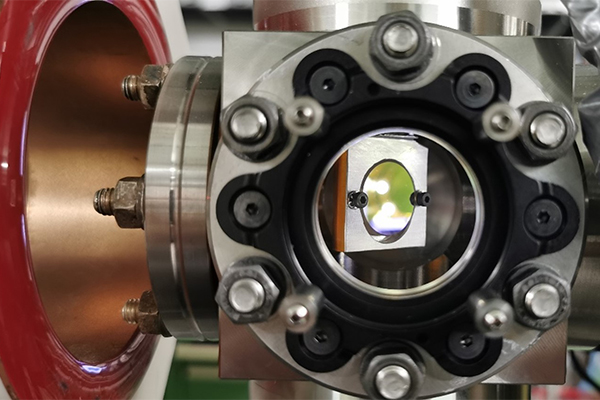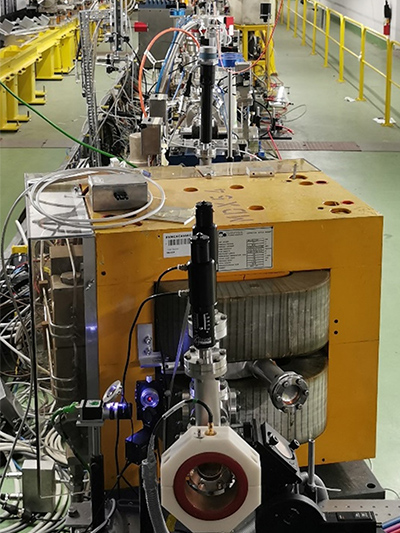Second visit to CLEAR for novel beam emittance measurements

Following a successful proof-of-concept trail last year, QUASARs Dr Joseph Wolfenden and Dr Debdeep Ghosal have recently completed a second measurement programme at the CERN Linear Electron Accelerator for Research (CLEAR), with PhD student Catherine Swain supporting remotely.
The experiments were to collect data for three ongoing developments within the QUASAR Group to measure an important beam parameter called emittance; this is generally used as a measure of the beam quality and is important factor in many applications. The new methods target three applications: bunch-by-bunch (or single-shot) measurement, optical phase space mapping, and non-invasive operation.

The transition radiation target mirror inside the vacuum system. (Image: QUASAR Group)
This work was funded as part of the AWAKE-UK project, in contribution to the Advanced Wakefield Experiment (AWAKE). In this project a high energy proton bunch is used to generate wakefields within a plasma, like a boat upon a lake. These wakefields are then used to accelerate electron bunches to extremely high energies. Currently this process is unstable and requires an array of beam diagnostics to accurately monitor the process. Single-shot, non-invasive, emittance measurements are a critical piece of instrumentation for future runs on AWAKE, and the QUASAR group are leading the development of these tools.
CLEAR has proven to be a reliable test facility for the instrumentation needed for the electron beam at AWAKE. The previous run at CLEAR had established the single-shot version of the measurement, so this trip focused on collecting more data for further analysis of this method. The optical phase space mapping (OPSM) and non-invasive measurements were proof-of-concept tests – the first of their kind. The OPSM was achieved using an array of individually controllable micrometre-scale mirrors called a DMD. Different mirror arrangements, or masks, can be applied to the DMD to probe different parts of the incoming optical signal. The non-invasive operation tests used most of the same optical system as the single-shot method, but used a different type of radiation. Up until now, these measurements had focussed on using optical transition radiation, produced by placing a mirror in the path of the electron beam. These new measurements would test the feasibility of using optical synchrotron radiation instead, which is produced non-invasively whenever the path of the electron beam is bent.

The CLEAR beamline. (Image: QUASAR Group)
A large collection of high-quality single-shot data has been collected and analysis is underway. Additionally, proof-of-concept measurements of the OPSM and synchrotron radiation measurements are looking very promising. The plan is to return to CLEAR later this year to fully develop the synchrotron non-invasive method for application at AWAKE.
*Image: Example images from the OPSM test. Left is the spatial image of the beam with a horizontal slice of the optical signal removed with the DMD. Right is the angular distribution of that optical signal slice. (Image: QUASAR Group)